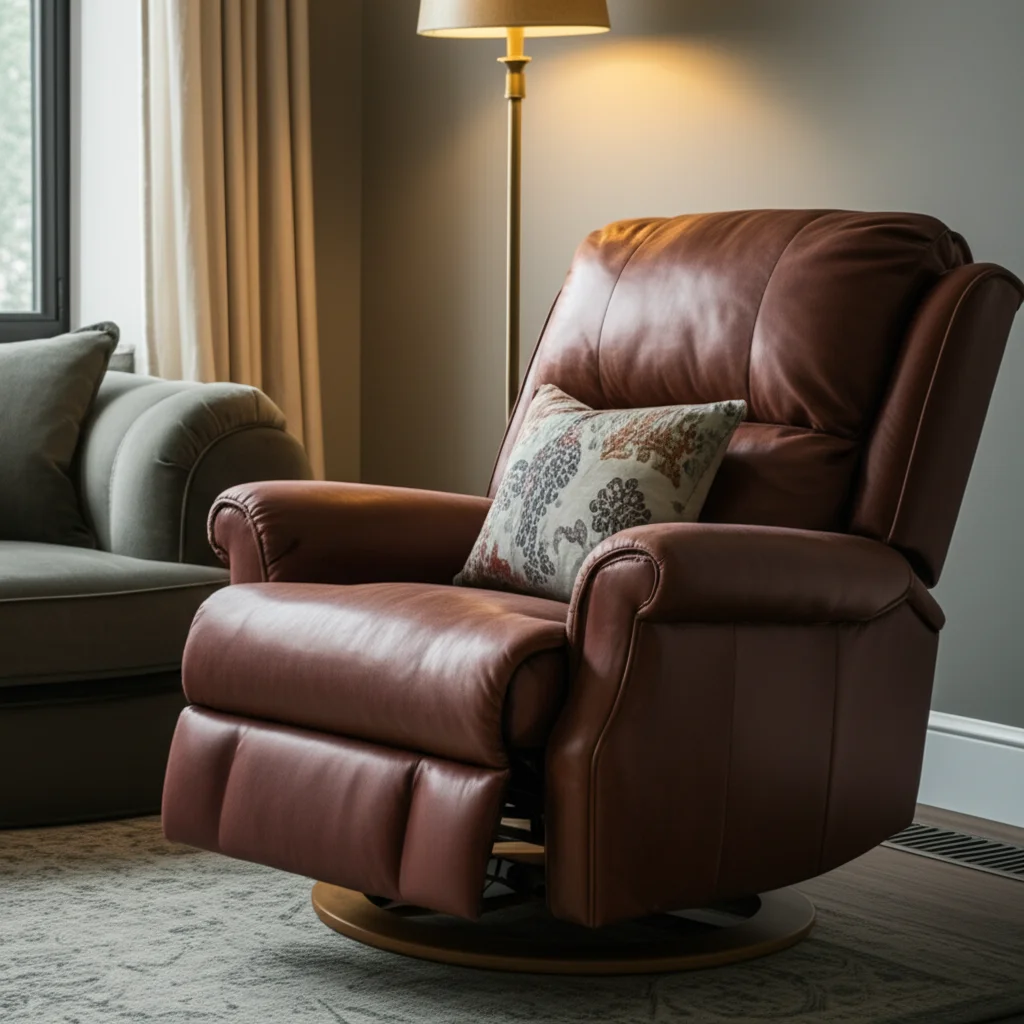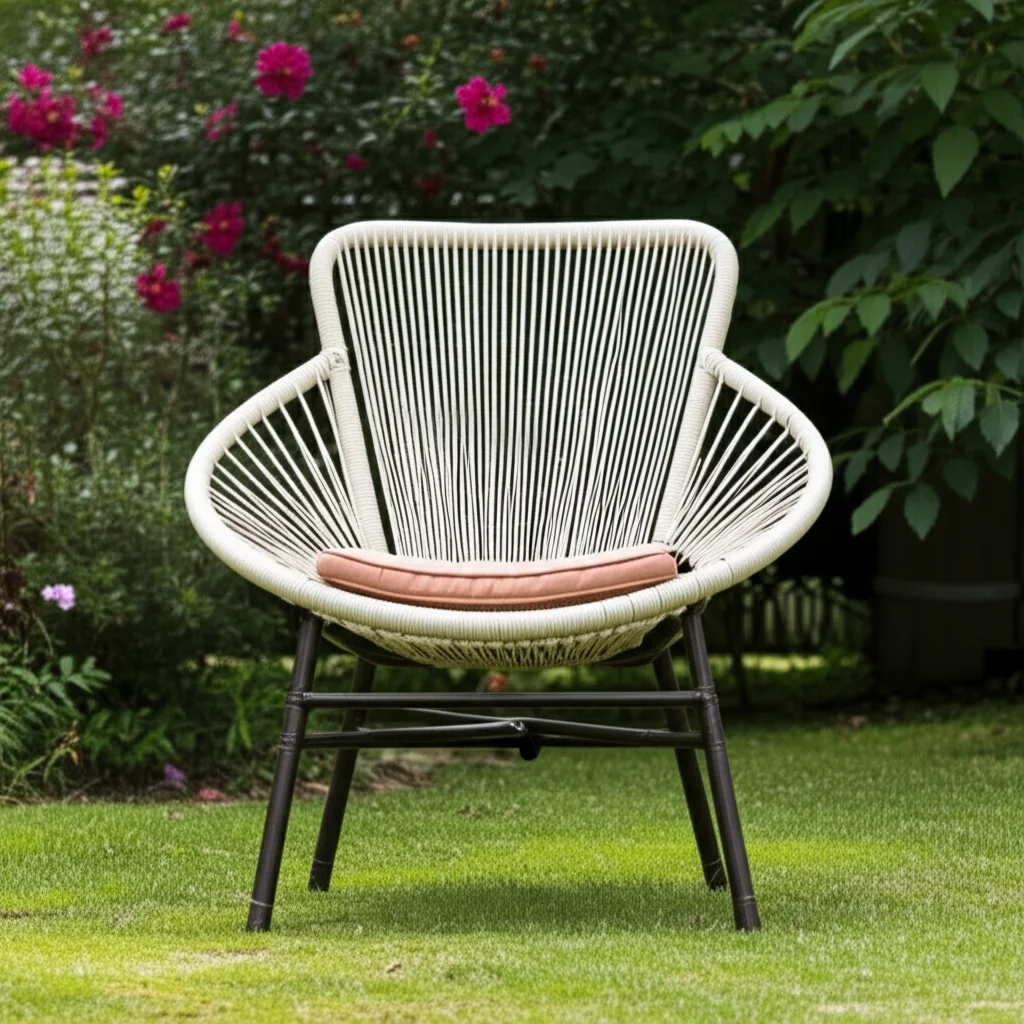· Todd Martin · DIY & Crafts · 19 min read
How To Make Recliner Chair Covers

Crafting Your Own Recliner Chair Covers
Is your favorite recliner looking a bit worn out? Perhaps its color clashes with your new decor, or it needs protection from pets and spills. Making your own recliner chair covers offers a wonderful solution. This DIY project saves money and lets you choose the exact fabric and style you want. It gives your furniture a fresh, new life.
You can transform an old recliner into a stylish piece. This guide helps you through each step of creating custom-fit covers. We will cover everything from choosing materials to the final stitches. Get ready to give your recliner a stunning makeover.
Takeaway
- Plan Your Project: Decide on a cover style (e.g., one-piece, multi-piece) and choose suitable fabric.
- Measure Carefully: Get accurate dimensions of all recliner parts for a precise fit.
- Create a Pattern: Use a muslin mock-up or old sheets to draft your pattern pieces.
- Cut and Sew: Cut your chosen fabric precisely and assemble the pieces with strong seams.
- Finish and Secure: Add elastic, ties, or zippers as needed to ensure the cover stays in place.
You can make recliner chair covers by measuring your chair, creating a pattern from an old cover or muslin, cutting durable fabric pieces according to your design, and sewing them together. This process allows for custom fit, style, and material choice. It protects your furniture and updates its look.
Why Make Recliner Chair Covers Yourself?
Your recliner is likely a centerpiece of comfort in your home. Over time, daily use, spills, and pet activity can take a toll on its appearance. Before you consider buying a new recliner or hiring professional upholsterers, think about making your own recliner chair covers. This option offers many benefits. It provides a creative outlet for home decorators.
One major benefit is cost savings. Custom slipcovers from professionals can be expensive. DIY covers let you achieve a high-end look at a fraction of the price. You only pay for the fabric and your time. This makes a significant difference for your budget.
Another advantage is complete design control. You select the fabric, color, and pattern that matches your home decor. This allows for a truly unique piece that reflects your personal style. Ready-made covers may not offer this level of customization. I always love how a custom cover truly makes a piece of furniture feel like it belongs.
Making your own covers also means better protection for your recliner. A well-made cover guards against new stains, pet hair, and general wear. You can easily remove and wash these covers. This keeps your recliner clean and extends its life. If you want to know more about keeping your furniture clean, you might find this guide helpful on how to clean a recliner chair.
Finally, the satisfaction of a DIY project is immense. You gain new skills and pride in your work. Giving an old recliner a new look through your own efforts is a rewarding experience. It also means you can create multiple covers for different seasons or moods.
Essential Supplies and Tools for Making Recliner Covers
Before starting your recliner cover project, gather all the necessary supplies and tools. Having everything ready makes the process smooth and efficient. The right materials ensure your cover is both durable and beautiful. Skipping this step can lead to frustration later.
First, you need to choose your fabric. The type of fabric depends on how you use your recliner and your design preferences. Durable options like heavy-duty cotton twill, denim, or canvas work well for high-traffic areas. Microfiber is good for spill resistance and softness. Velvet or chenille can add a touch of luxury. Always look for fabrics that are washable and easy to maintain. Consider pre-washing your fabric to prevent shrinkage after you sew.
Next, you will need measuring tools. A flexible tape measure is essential for accurate chair dimensions. A yardstick or a long ruler helps with cutting straight lines. Fabric chalk or a washable marker is useful for marking your fabric. These tools help you transfer your pattern correctly.
A good sewing machine is a must for this project. Recliner covers use heavy fabrics and require strong seams. Make sure your sewing machine can handle thicker materials. You will also need strong thread, such as upholstery thread, to match your fabric. Sharp fabric scissors are vital for clean cuts. A rotary cutter with a mat can also speed up cutting large pieces.
Other helpful items include pins or fabric clips to hold pieces together. A seam ripper is useful for correcting mistakes. An iron and ironing board help press seams flat for a professional finish. If you plan to add elastic, zippers, or ties, have those ready as well. Remember, proper tools make any sewing project easier.
How to Accurately Measure Your Recliner Chair
Accurate measurement is the most critical step in making recliner chair covers. A well-fitting cover depends entirely on precise dimensions. Do not rush this stage. Take your time to measure each part of the recliner carefully.
Start by sketching a simple diagram of your recliner. Label each section you will cover: the back, seat, armrests, footrest, and side panels. Recliners often have distinct movable parts. You need to account for these movements. A multi-piece cover typically works best for recliners. For example, a separate piece for the seat and a separate piece for the back allows the chair to recline without pulling. If you are curious about different cover types, you can also learn how to make a slip cover for a chair.
Use a flexible tape measure to take all measurements. For each section, measure the length and width. Add extra inches for seam allowances and tuck-in allowances. A general rule is to add 1 inch for seams and 6-12 inches for tucking into crevices. This extra fabric ensures the cover stays in place and gives a relaxed look.
Key measurements to take:
- Chair Back: Measure from the top of the back down to the seat crease, and across its widest point.
- Seat Cushion: Measure from side to side and front to back. Allow for depth if the cushion is thick.
- Armrests: Measure the length, width, and height of each armrest. Consider measuring the inside and outside separately if they have different shapes.
- Footrest: Measure its length and width. Remember it moves, so ensure enough slack.
- Side Panels: Measure from the armrest down to the floor, and from front to back.
Remember to measure around curves and odd shapes. If your recliner has a handle or levers, plan to create openings for them. Mark these spots during your measurement phase. Double-check all your numbers before cutting any fabric. You cannot add fabric once it is cut too short.
Creating a Recliner Cover Pattern
Once you have all your measurements, the next step is to create a pattern for your recliner chair covers. This stage translates your dimensions into usable templates for cutting fabric. There are a few methods to approach this, each with its own benefits. Choose the method that best suits your comfort level and the complexity of your recliner.
One popular method is to use a muslin fabric or old sheets to create a mock-up. Drape these inexpensive fabrics over your recliner, pinning them directly to the chair to mimic the shape of each section. This allows you to see how the fabric will lie and identify any areas that need adjustment. Use a marker to draw seam lines directly onto the muslin. Once satisfied, carefully remove the pinned pieces, unpin them, and use them as your pattern pieces. This method gives you a hands-on feel for the fit.
Another method involves disassembling an existing, ill-fitting slipcover if you have one. Carefully take apart its seams to get flat pieces of fabric. These pieces can serve as a basic pattern. You will need to adjust them to fit your specific recliner’s dimensions. This saves time on draping from scratch. If you’ve ever tried to put on a 4-piece recliner slipcover, you know how important well-fitting pieces are.
For a multi-piece cover, you will need separate patterns for the seat, back, armrests, and footrest. Recliner chairs have movable parts. A multi-piece design allows each section to move independently. This prevents fabric from tearing or pulling when the chair reclines. Ensure you mark “top,” “bottom,” “front,” and “back” on each pattern piece. This helps prevent confusion when cutting and sewing.
Add seam allowances directly to your pattern pieces. A standard seam allowance is usually 1/2 inch to 1 inch. Also, remember to add extra fabric for tuck-in allowances where the cover will be pushed into the crevices of the chair. This ensures the cover stays snug. I usually add about 6-8 inches for tuck-in allowances on the seat and back pieces.
Cutting and Sewing Your Recliner Cover Pieces
With your patterns ready, it is time to cut and sew your recliner chair covers. This is where your chosen fabric begins to take shape. Precision here makes a big difference in the final look of your cover. Take your time with each step to ensure a professional finish.
First, lay your chosen fabric flat on a large, clean surface. Smooth out any wrinkles. Place your pattern pieces on the fabric, following the grainline of the fabric. The grainline runs parallel to the selvage edge (the finished edge) of the fabric. This ensures the fabric hangs correctly and prevents distortion. Pin your pattern pieces securely to the fabric.
Carefully cut around each pattern piece using sharp fabric scissors or a rotary cutter. Cut accurately along your marked lines, including seam allowances. It is better to cut slightly larger than too small. You can always trim excess later. Label each cut fabric piece. For example, “back top,” “seat front,” “left arm,” and so on. This prevents mix-ups during assembly.
Now, move to your sewing machine. Start by sewing the main body sections together. This usually means connecting the seat piece to the back piece first. Use a strong thread suitable for upholstery fabrics. A straight stitch is common for most seams. Reinforce seams that will experience stress, such as those where the seat meets the back, with a second line of stitching or a zigzag stitch.
General sewing sequence for a multi-piece cover:
- Sew the main body: Connect the back section to the seat section. Remember to leave openings for the arms if you are doing a semi-fitted style.
- Attach armrest pieces: Sew the armrest sections onto the main body. Match curves and corners carefully.
- Assemble footrest cover: Stitch the footrest pieces together.
- Connect side panels: Join the side panels to the main body, running from the armrest area down to the bottom edge.
- Hem all raw edges: Fold under and press all raw edges along the bottom and around openings. Stitch them down for a clean finish.
As you sew, regularly stop and press your seams open or to one side with an iron. Pressing creates crisp, flat seams that look more professional. This is a simple step that significantly improves the overall appearance of your finished recliner chair covers.
Adding Finishing Touches and Securing Your Cover
You are nearing the finish line in making your recliner chair covers! The final steps involve adding finishing touches and ensuring your cover stays securely in place. These details elevate your DIY project from good to great. They also make the cover functional for daily use.
Once all the main pieces are sewn together and hemmed, it is time to try the cover on your recliner. Drape it over the chair, aligning the seams with the chair’s natural lines. This trial fit helps you identify any areas that might need minor adjustments. Pin any excess fabric to achieve a snugger fit. You might find areas where the fabric bunches or sags.
To help the cover stay put, especially with a recliner’s movement, consider adding securing elements.
- Elastic: Sew elastic into the hems of sections that wrap around the bottom of the chair or the footrest. This creates a gathered, hugging effect that keeps the fabric tight.
- Ties: Attach fabric ties at strategic points. You can sew ties to the bottom edges of the cover and tie them underneath the chair. For a multi-piece cover, you can add ties where the back and seat pieces meet the armrests. This helps pull the cover taut into the crevices.
- Velcro: Sew strips of Velcro to the underside of the slipcover and corresponding areas on the recliner. This provides a strong hold without being visible.
- Zippers: For a very fitted, professional look, you can incorporate zippers. Zippers are especially useful for armrest covers or sections that wrap tightly around the chair’s frame. This approach may be more complex but offers a very secure fit.
Consider creating openings for any recliner handles or levers. You can do this by cutting a small slit in the fabric and then reinforcing the edges with a dense zigzag stitch or by sewing a small fabric patch around the opening. This allows easy access to the reclining mechanism.
For a polished look, consider adding decorative piping along seam lines or creating a skirt around the bottom of the recliner. These additions are optional but can significantly enhance the visual appeal of your recliner chair covers. Remember, a little extra effort in the finishing touches pays off.
Maintaining Your DIY Recliner Chair Covers
You have put in the effort to make beautiful recliner chair covers. Now, keeping them clean and well-maintained is important. Proper care ensures your covers last long and continue to protect your recliner effectively. The care routine will largely depend on the fabric you chose.
Before cleaning, always check your fabric’s specific care instructions. Most DIY recliner covers use machine-washable fabrics like cotton, denim, or microfiber. If you used a delicate or upholstery-specific fabric, dry cleaning might be necessary. I always recommend choosing machine-washable fabrics for ease of care. This makes your life much simpler.
For everyday cleaning, a simple routine helps. Vacuum your recliner cover regularly to remove dust, pet hair, and crumbs. A brush attachment on your vacuum cleaner works well for this. Spot clean small spills immediately. Blot the spill with a clean cloth and a mild detergent solution. Avoid rubbing, as this can spread the stain. If you want to dive deeper into cleaning different types of covers, you can check out guides like how to clean outdoor furniture covers or even how to wash velvet couch covers.
When it is time for a full wash, remove the covers from your recliner. If your cover is a multi-piece design, wash each piece separately or together, depending on your washing machine’s capacity. Use cold water and a gentle cycle. Hot water can cause some fabrics to shrink or colors to fade. A mild detergent is always best. Avoid using bleach, which can damage fabric fibers and color.
After washing, you have two main drying options. Air drying is often the best choice for large fabric items. Hang the covers on a clothesline or lay them flat to dry. This prevents shrinking and maintains the fabric’s shape. If you use a dryer, choose a low heat setting. Remove the covers while they are still slightly damp to prevent wrinkles. Then, smooth them out and put them back on the recliner.
Regular care keeps your recliner chair covers looking fresh and extends their lifespan. It also keeps your recliner protected. A clean cover also contributes to a cleaner home environment.
Creative Ways to Customize Your Recliner Covers
Making your recliner chair covers allows for full creative expression. Beyond choosing the fabric, many options exist to customize your cover. These ideas make your recliner truly unique. They reflect your personal style and enhance your home’s decor.
One simple way to add flair is with contrasting piping or trim. Instead of plain seams, sew in a contrasting color of piping along the edges of your cover pieces. This adds a defined outline and a pop of color. You can also use decorative trim or cording for a more traditional look. This is a subtle detail that adds a professional touch.
Consider adding pockets to the armrests. These pockets are practical for holding remote controls, books, or magazines. They keep your living room tidy. You can make these pockets from the same fabric or a complementary one. Simply sew a patch pocket onto the armrest sections before assembling the cover. I find these pockets incredibly useful for keeping remotes from getting lost.
For a relaxed, shabby-chic look, add ruffles or a skirt around the bottom edge of the recliner cover. This softens the lines of the chair and adds a touch of elegance. You can gather a long strip of fabric and attach it to the bottom hem. This works well for a non-fitted, relaxed slipcover style.
Fabric choices offer endless possibilities. Do not limit yourself to solid colors. Explore patterned fabrics like stripes, florals, or geometric designs. Mix and match patterns. Use a patterned fabric for the main body and a solid color for the armrests. This creates visual interest. You can also make a chair cover from a sheet for a very budget-friendly option.
Embroidery or appliques can personalize your cover further. Add your initials, a simple design, or an applique of a favorite motif. This makes the recliner cover truly yours. You can do this by hand or with an embroidery machine.
Finally, consider making interchangeable parts. For example, create separate armrest covers that you can swap out easily. This allows you to change the look of your recliner without making an entirely new cover. You could have seasonal arm covers or ones for special occasions. These small creative touches make a big impact.
Troubleshooting Common Issues When Making Recliner Covers
Even with careful planning, you might encounter issues when making recliner chair covers. Do not get discouraged. Most problems have simple solutions. Knowing how to troubleshoot helps you complete your project successfully.
One common issue is the cover not fitting correctly. If it is too tight, it might pull or tear when the recliner moves. If it is too loose, it will wrinkle and slide around.
- Too tight: Check your seam allowances. You may have sewn them too wide. Use a seam ripper to release some stitches and resew with a narrower allowance. If the pattern itself is too small, you might need to add fabric panels or restart with larger pattern pieces.
- Too loose: Take in the seams to make the cover tighter. Pin the excess fabric while the cover is on the chair, then mark and sew new seam lines. Remember to press new seams flat.
Another problem can be fabric slipping or bunching. Recliners move, and this can cause the cover to shift.
- Solution: Add more securing elements. Consider additional ties underneath the chair. You can sew small pieces of Velcro to the inside of the cover and corresponding spots on the chair. Elastic sewn into hems also helps keep the cover snug around edges. Tucking excess fabric deeply into crevices also helps.
Seams not lying flat or looking bulky is another common concern.
- Solution: Always press your seams after sewing. Use an iron to flatten the seam allowances. You can press them open or to one side. For bulky fabrics, trim the seam allowance or use a zigzag stitch to reduce bulk. Reinforcing seams in high-stress areas prevents them from tearing later.
Sometimes, making openings for handles or levers can be tricky.
- Solution: Measure carefully for the exact spot. Cut a small opening. Reinforce the edges of the opening with a dense zigzag stitch or by sewing a fabric facing around the hole. This prevents fraying and tearing. Test the recliner’s function after making the opening to ensure the handle moves freely.
Finally, fabric fraying during sewing can be frustrating.
- Solution: Choose fabrics that do not fray easily, especially for your first project. If your fabric frays, finish all raw edges. You can use a serger, a zigzag stitch on your sewing machine, or French seams for a very clean finish. This seals the edges and prevents them from unraveling. Practice on fabric scraps before working on your main cover pieces.
FAQ Section
What is the best fabric for recliner covers?
The best fabric for recliner covers depends on your needs. Durable options like heavy-duty cotton twill, denim, or canvas are great for high-traffic use. Microfiber offers softness and spill resistance. Velvet or chenille adds a luxurious feel. Always choose fabrics that are machine-washable and easy to maintain for convenience.
Can I make a recliner cover without a sewing machine?
Making a recliner cover without a sewing machine is possible but challenging. You would need to hand-stitch all seams, which is very time-consuming and requires strong hand-sewing skills for durability. For a temporary solution, you could drape and secure large fabric pieces with ties or pins. A sewing machine makes the project much more manageable and the result more durable.
How much fabric do I need for a recliner cover?
The amount of fabric needed varies by recliner size and cover style (one-piece vs. multi-piece). A standard recliner typically requires 6 to 10 yards of 54-inch wide fabric. It is always better to buy extra fabric, usually an additional yard, to account for errors, pattern matching, or future repairs. Measure all sections of your recliner and sketch a layout to estimate more precisely.
How do I secure my DIY recliner cover so it stays in place?
To secure your DIY recliner cover, use several methods. Sew elastic into the bottom hems for a snug fit. Attach fabric ties to the underside of the cover and tie them around the chair frame. You can also sew Velcro strips to the cover and corresponding spots on the chair for a strong hold. Tucking excess fabric deep into crevices helps keep it from shifting.
How long does it take to make a recliner cover?
The time it takes to make a recliner cover varies greatly. For a beginner, it might take 15-20 hours, spread over several days. An experienced sewer could finish in 8-10 hours. The complexity of your recliner, the chosen cover style (one-piece versus multi-piece), and your sewing experience all impact the total time spent.
Conclusion
Making recliner chair covers is a fulfilling and practical DIY project. It allows you to protect your furniture, update your home decor, and save money. You can transform an old, tired recliner into a stylish, comfortable seating area that truly reflects your taste. We have covered the entire process, from choosing your fabric and measuring precisely to cutting, sewing, and adding those all-important finishing touches.
Remember the value of careful planning and patience. Each step, from creating a detailed pattern to pressing your seams, contributes to a professional-looking result. Do not shy away from troubleshooting common issues; they are part of any DIY journey. Embrace the chance to personalize your recliner with custom details like pockets or unique trims.
I believe this guide provides a clear path for you to succeed in making recliner chair covers. Your efforts will result in a custom piece that brings comfort and style to your home for years to come. Start your project today and give your favorite recliner the makeover it deserves.





